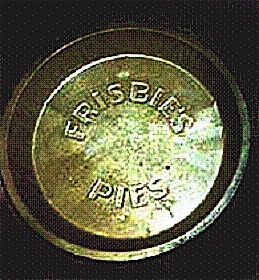Putting A Spin On It
More Frisbees are sold each year than baseballs,
basketballs, and footballs combined. Yet these familiar flying objects have
subtle and clever aerodynamic and gyrodynamic properties which are only recently
being documented by wind tunnel and other studies.

More Frisbees are sold each year than baseballs, basketballs, and footballs combined. Yet these familiar flying objects have subtle and clever aerodynamic and gyrodynamic properties which are only recently being documented by wind tunnel and other studies.
In Spinning Flight, Ralph Lorenz discusses familiar, but largely undeveloped, topics concerning spinning objects in an accessible manner. “Toys” familiar to all of us are covered as well as high-tech products of the aerospace industry. The amply illustrated book includes not only the latest published results but also describes Lorenz’s own experiments, with “how-to” instructions on how readers can do their own experiments.
Boomerangs, which represent another category of spinning aerodynamic body, are also discussed. Supported by equations and graphs, Lorenz explains how the shape and throw of a boomerang relates to its trajectory.
The natural world presents still other examples, namely the samaras or “seed-wings” of many tree species, which autorotate during their descent, like a helicopter whose engine has failed. In addition to spinning objects of various shapes, the book also discusses several exotic manned aircraft with disc platforms - these include a Nazi “secret weapon” and the De Havilland Avrocar.
I love how the best and brightest in science often refuse to be delimited by a single craft. Lorenz has spent his recent years working on the Huygens space probe. I wonder if he snuck a boomerang into the belly of the critter for denizens of Titan to play with?
Posted: Mon - October 23, 2006 at 08:55 AM